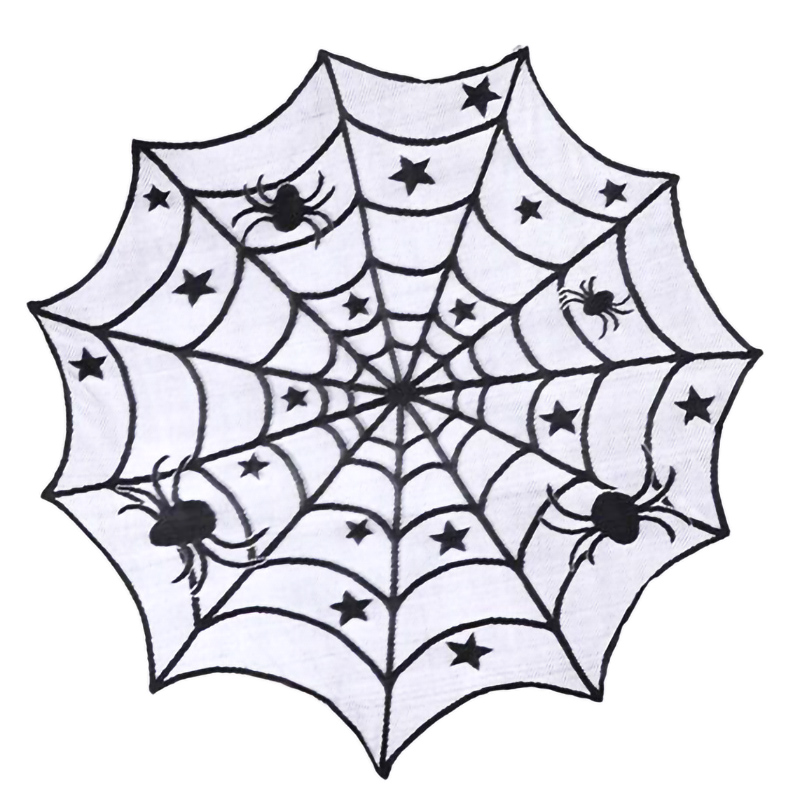How to properly clean and maintain the Spider Bat Round Tablecloth?
Posted by Admin
Properly cleaning and maintaining the Spider Bat Round Tablecloth is essential to preserve its quality and appearance. Here's a guide:
Regular Cleaning: After each use, it's crucial to maintain the cleanliness of your tablecloth. Begin by gently shaking it to dislodge any loose debris like crumbs, dust, or pet hair. This initial step not only keeps the tablecloth looking tidy but also prevents any abrasive particles from grinding into the fabric, which could cause premature wear and tear.
Spot Cleaning: Accidents happen, so it's essential to address spills promptly to prevent staining. When a spill occurs, immediately blot the affected area with a clean, dry cloth or paper towel. Apply gentle pressure to absorb as much liquid as possible without spreading it further. Avoid rubbing the spill, as this can embed the substance deeper into the fibers. Instead, continue blotting until the excess moisture is removed.
Hand Washing: For light to moderate soiling or localized stains, hand washing offers a gentle yet effective cleaning method. Fill a basin or sink with lukewarm water and add a small amount of mild detergent, preferably one specifically formulated for delicate fabrics. Submerge the tablecloth in the soapy water and agitate it gently to allow the detergent to penetrate the fibers and lift away dirt and stains. Use a soft-bristled brush or sponge to target stubborn spots, working in a circular motion from the outer edges toward the center to prevent spreading. Once cleaned, rinse the tablecloth thoroughly under cool, running water to remove any residual soap suds.
Machine Washing (if applicable): Before tossing your tablecloth into the washing machine, always refer to the care label for specific instructions and recommendations. If machine washing is suitable for your tablecloth, select a delicate or gentle cycle with cold water to minimize agitation and reduce the risk of damage. Add a small amount of mild detergent to the machine, taking care not to overload it with other items to ensure adequate water circulation. After the wash cycle is complete, promptly remove the tablecloth from the machine to prevent wrinkling and air dry it to preserve its integrity.
Ironing (if necessary): While some fabrics may emerge from the wash cycle wrinkle-free, others may require a gentle touch-up with an iron to restore a smooth, pristine appearance. Before ironing, check the fabric care label to determine the appropriate temperature setting for your iron. For delicate or heat-sensitive fabrics, such as polyester or satin, use a low to medium heat setting to prevent scorching or melting. Fill the iron with distilled water and set it to the steam function to help release stubborn wrinkles. Place a clean, cotton cloth or pressing cloth over the tablecloth to protect the fabric from direct contact with the iron and prevent shine or discoloration. Working in small sections, glide the iron over the fabric in smooth, continuous motions, applying gentle pressure as needed until the wrinkles vanish.
Storage: Proper storage plays a crucial role in preserving the longevity and appearance of your tablecloth between uses. Before stowing it away, ensure the tablecloth is completely dry to prevent mold or mildew growth. If folding the tablecloth for storage, avoid creasing along the same lines repeatedly, as this can weaken the fabric over time. Instead, loosely roll the tablecloth around a cardboard tube or acid-free tissue paper to minimize creasing and preserve its shape. Alternatively, store the tablecloth flat in a breathable fabric bag or cotton pillowcase to protect it from dust, sunlight, and potential damage.
Spider bat round tableclothfor halloween home decoration



 English
English Español
Español













